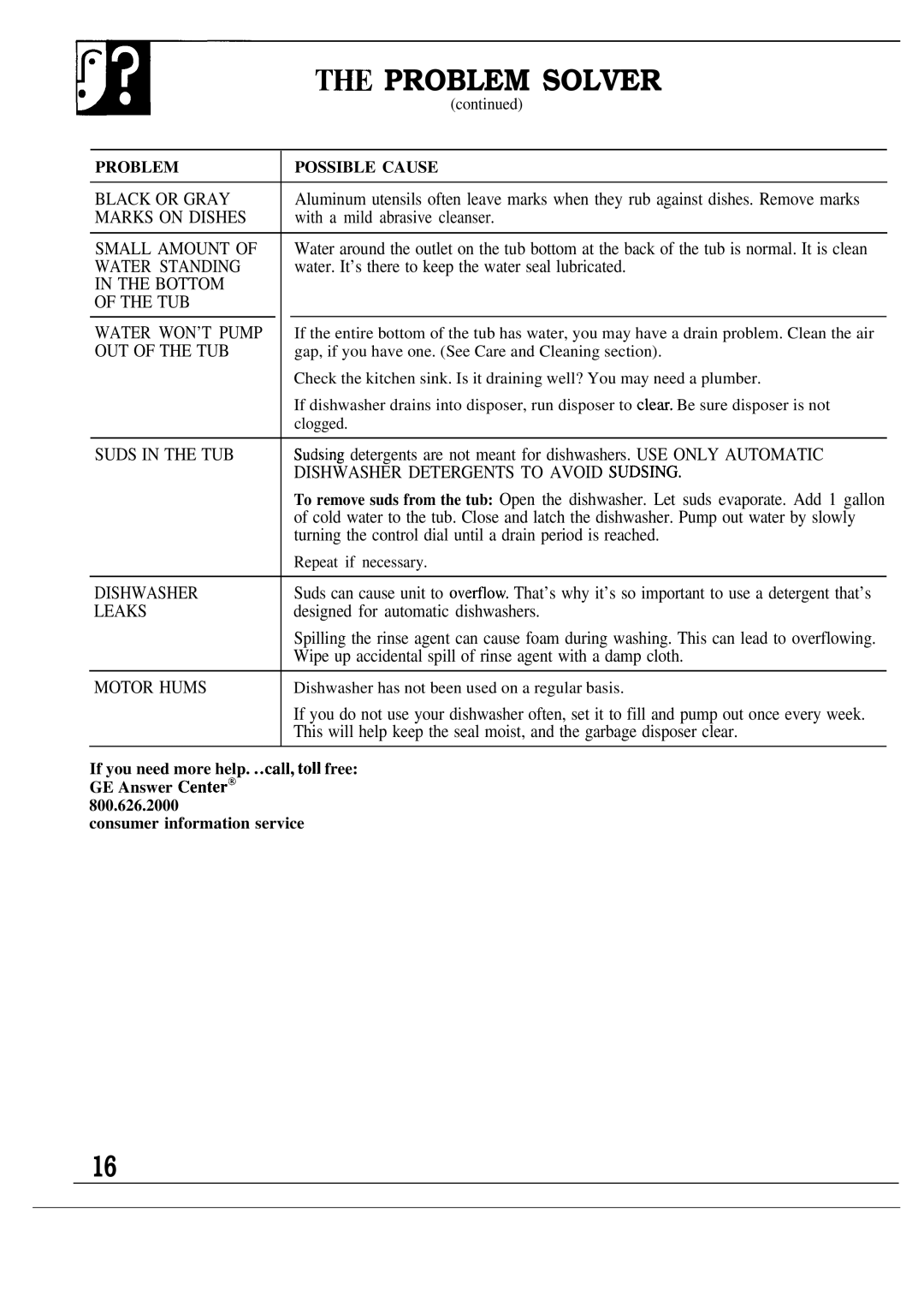
|
|
| T~ PROBLEM SOLVER |
|
|
| (continued) |
|
|
|
|
PROBLEM |
| POSSIBLE CAUSE | |
|
|
|
|
BLACK OR GRAY |
| Aluminum utensils often leave marks when they rub against dishes. Remove marks | |
MARKS ON DISHES |
| with a mild abrasive cleanser. | |
|
|
|
|
SMALL AMOUNT OF |
| Water around the outlet on the tub bottom at the back of the tub is normal. It is clean | |
WATER STANDING |
| water. It’s there to keep the water seal lubricated. | |
IN THE BOTTOM |
|
| |
OF THE TUB |
|
| |
|
|
|
|
WATER WON’T PUMP |
| If the entire bottom of the tub has water, you may have a drain problem. Clean the air | |
OUT OF THE TUB |
| gap, if you have one. (See Care and Cleaning section). | |
|
|
| Check the kitchen sink. Is it draining well? You may need a plumber. |
|
|
| If dishwasher drains into disposer, run disposer to clear. Be sure disposer is not |
|
|
| clogged. |
|
|
| |
SUDS IN THE TUB |
| Sudsing detergents are not meant for dishwashers. USE ONLY AUTOMATIC | |
|
|
| DISHWASHER DETERGENTS TO AVOID SUDSING. |
|
|
| To remove suds from the tub: Open the dishwasher. Let suds evaporate. Add 1 gallon |
|
|
| of cold water to the tub. Close and latch the dishwasher. Pump out water by slowly |
|
|
| turning the control dial until a drain period is reached. |
|
|
| Repeat if necessary. |
|
|
| |
DISHWASHER |
| Suds can cause unit to ovefflow. That’s why it’s so important to use a detergent that’s | |
LEAKS |
| designed for automatic dishwashers. | |
|
|
| Spilling the rinse agent can cause foam during washing. This can lead to overflowing. |
|
|
| Wipe up accidental spill of rinse agent with a damp cloth. |
|
|
| |
MOTOR HUMS |
| Dishwasher has not been used on a regular basis. | |
|
|
| If you do not use your dishwasher often, set it to fill and pump out once every week. |
|
|
| This will help keep the seal moist, and the garbage disposer clear. |
|
|
|
|
If you need more help. ..call, toll free: GE Answer Center@
800.626.2000
consumer information service
16
